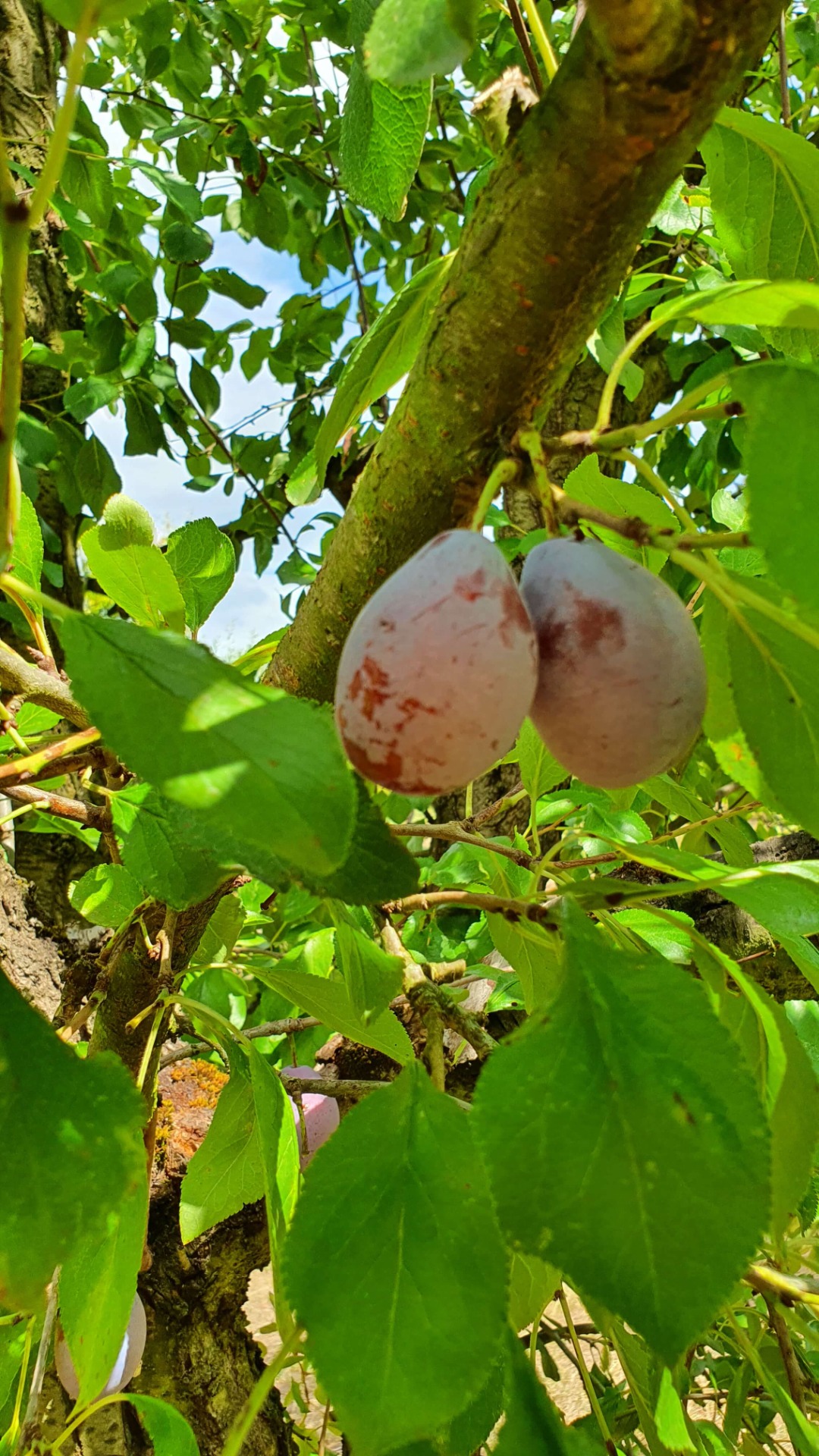
Plum orchards
Origin of the Agen Prunes

In 2002, the PGI "Pruneaux d'Agen" was created, thus protecting the 6 departments of the South-West where this delicacy comes from (Lot-et-Garonne (76%), Dordogne (8%), Gironde (6%), Tarn-et-Garonne (4%), Gers and Lot).
Each year, nearly 40,000 tonnes of Agen prunes are sold in France (70%) and abroad (30%).
The harvest of the Plum d'Ente
Harvesting times may vary slightly depending on the region, but traditionally it runs from mid-August to mid-September. In order to have a very sweet plum, the plums must be harvested when they are ripe and especially before they fall to the ground. We know that the Ente plum is ready to be picked when it can be easily detached from its branch.
That's why we use special machines that vibrate each tree to make them fall. They then land on soft walls so as not to damage them.
Don't hesitate to watch this short video explaining the process.
The drying stage

Harvested in paloxes, the plums are sorted by size and stoned. Then comes the last stage, the drying stage. This consists of placing the fresh plums on racks (= wooden frame with a grid) and putting them in the oven. To obtain a dry prune (21% humidity), the plums are left in the oven for 20 to 24 hours at a temperature of between 75°C and 85°C. Count 3.2 kg of plums for 1 kg of prunes.



